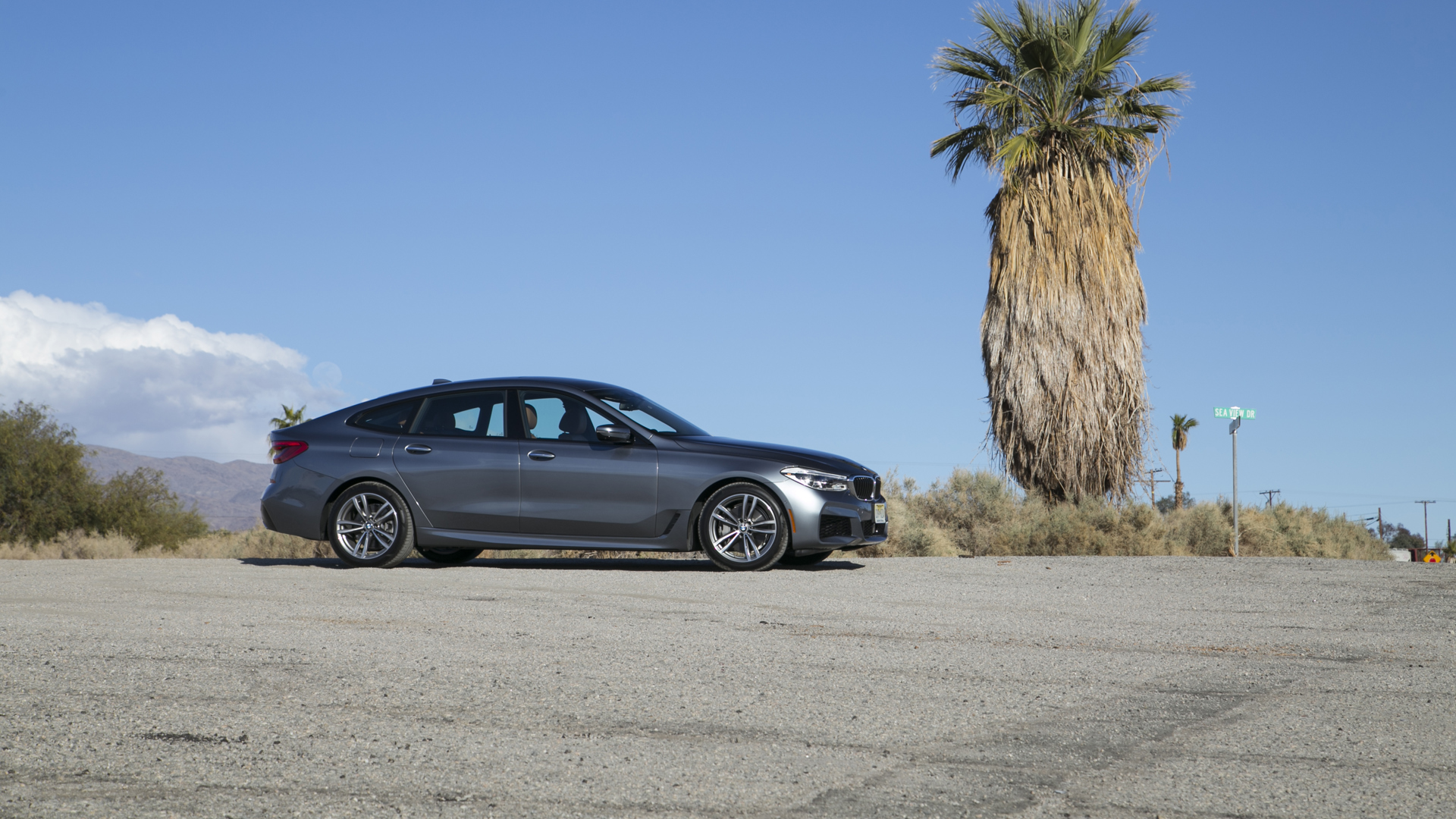It was almost as if BMW felt it had something to prove.
A couple dozen automotive journalists from across Canada and the United States were invited to the BMW Performance Center West at the Thermal Club race complex near Palm Springs, California, where an extensive collection of current BMW Group vehicles would be made available to drive. Many of the vehicles were lined up for this BMW Test Fest, waiting for track-hungry media-types to take advantage of burning up someone else’s fuel, tires, and brakes.
But it wasn’t just track-ready weapons like BMW’s all-new M5 super sedan that were offered up for threshold testing, as even M-Sport and Mini models were gassed up and ready to go on the track for willing drivers.
In recent years, media folk (and plenty of internet commenters alike) have expressed concern that the Ultimate Driving Machine company is more interested in chasing profits from crossovers and softened luxury sedans than producing real driver’s cars. It’s understandable then, that BMW may have had something to prove, and wants the world to know there’s still plenty of enthusiast blood flowing through the corporate veins.
BMW i3s

A fleet of BMW’s electrified vehicles served as shuttles between the hotel and track, located about a half-hour drive away. Having never driven an i3 before, I was pleased to snag a bright red S-trim model for my commute.
Finished inside with a dizzying array of textures and colours ranging from tweed to bamboo to something that looked like petrified dryer sheets, the i3s’s interior was clearly designed by science fiction fans. Still, it is comfortable, airy and provides excellent outward visibility – just the ticket for navigating the dreary, congested urban settings where it’s most likely to spend the majority of its life.
Driving the i3S was shocking (excuse the pun). Given the almost comical proportions of the car, my expectation was a car that would drive more like a golf cart than, well, a BMW. The first stoplight vaporized that belief. With a generous boot-full of throttle, the little i3s took off at an eyebrow-raising pace up to the 50 mph speed limit.

Approaching the next red light, the regenerative braking brought the i3S down to a slow crawl, requiring actual use of the brakes only to bring the car to an full stop from one or two km/h. My peer pulled alongside in a BMW 330e with a look of complete astonishment on his face, having tried as he might to keep up with the little red electric car.
With 195-width performance tires on the S-trim cars versus the bicycle-like 155-width tires of the regular i3, the grip for both acceleration and handling is decent, making the i3s a properly fun little runabout.
Pit Stop: Rolls-Royce Phantom and BMW X2
Once at the track, following a safety briefing, I swapped out the BMW Group’s smallest car for its largest: the Rolls-Royce Phantom VIII, and then the all-new BMW X2 crossover – my experiences with those machines have been separately documented.
BMW M5

Having downed yet another caffeine-rich Americano, it was time to hit the track. My intent was to build slowly, starting with one of the more modest offerings, like the BMW 340i loaded up with a myriad of parts from the M Performance Catalogue, and work up to the new M5.
Fate had other plans, and I found myself in a gleaming white M5 before I could protest (not that I would anyway). The plan was pretty straightforward: drivers in each of the three M5s would follow the chief instructor ahead of us in an M3 for a reconnaissance lap of the track with the M5 set to Comfort mode, then, when instructed to do so, we’d double-tap the red M1 button on the steering wheel, unleashing the full 600-horsepower fury of BMW’s ultimate super sedan for a multi-lap cat-and-mouse session as fast as the slowest car would allow.
The track was configured with enough tight corners and hairpin turns to keep speeds manageable, but also required practically standing on the brakes over and over and over again, to bring the big sedan down to safe speeds after gaining incredible velocity. The fierce braking force was always straight and true. That last point may seem a given, but later in the day I’d notice a big difference in cars not equipped with the carbon-ceramic brakes, as the hours of track abuse would soften feel and performance considerably.

The M5 is not a small car, and being the first true M-car to possess xDrive all-wheel drive, it’s also quite complex. Harnessing that much horsepower (and daily-driver usability) makes all-wheel drive a smart move for the M5, affording it astonishing acceleration from a stop. But if gratuitous, smokey donuts are your thing, the car can direct all power to the rear wheels only.
There are a lot of buttons, switches, and settings inside the M5, though, and it takes time to set everything up just the way a driver might like. What’s more, while capable of magical performance, there’s definitely a sensation that the car is doing all the work. For a car I had just met, and a track I was seeing for the first time, I found myself wishing for a smaller, more traditional performance car.
BMW M3 with M Performance Parts

While down a whopping 175 horsepower compared to its M5 sibling, the M3 hits the sweet spot on a compact race track. With a proper manual transmission (and the help of digital downshift rev-matching), the M3 offers a perfect combination of high technology and traditional sports car engagement.
The M3 is right-sized for my tastes too, feeling more an extension of the driver’s body than the larger and heavier M5. On the Autobahn at more than 250 km/h, the higher performance capabilities and greater stability would likely be welcome, but here on a tight road course, I prefer playful nimbleness. And that inline six-cylinder engine still sounds magnificent, especially with the M Sport exhaust turned up to 10 on the volume dial.
This F30 generation 3 Series is getting old by modern automotive standards and yet the amount of joy this machine can generate – not to mention the rarity of having an excellent three-pedal set-up – keeps the M3 a genuine performance car for real enthusiasts. The catalogue of M Performance Parts helps keep the M3 fresh and engaging, though my test car featured mostly cosmetic upgrades (like stripes, a wing spoiler and upgraded wheels), as well as a few track necessities like the Performance Exhaust and carbon-ceramic brakes.
Mini John Cooper Works Clubman ALL4

If I had the chance to do it all again, I’d pick one of the Minis with the JCW package to do my first reconnaissance laps of the track. It’s a little unfair to step out of a track-ready machine like the M3 and expect the far more modest Mini to feel like anything but a disappointment.
The not-so-mini Clubman four-door hatchback (six-door if you count the dual rear doors?) receives upgrades to suspension and brakes in JCW guise, but it also gets a power bump over the Clubman S as well. With nearly 40 more horsepower (228 hp) than the S and 258 lb-ft of torque, the Clubman JCW puts out more twist than any other Mini, JCW-tune or otherwise.
Even still, driving the Clubman as fast as I could, my peer in a three-door Mini JCW ahead of me would regularly pull away on the straightaways, only to be (mostly) reeled in again in the corners.
Carrying speeds much lower than in the M cars – and relying on the ALL4 all-wheel drive system to make up for ham-fisted antics – made the Minis fun to roughhouse with on the track. The softer suspensions also soaked up the curbing when clipping an apex tighter than was prudent.
Being saddled with the eight-speed Aisin automatic transmission also took some wind out of the Mini’s sail, and the brakes possess nowhere near the bite or stopping power of the BMWs. After our five-lap session (and countless more in the earlier half of the day by other drivers), the three-door JCW’s brakes sent smoke signals into the desert sky, foretelling the pending end to their useful life.
While nowhere near the serious track machines of the M cars, the JCW Minis are nevertheless legitimately driver’s cars capable producing plenty of driving excitement, if not record lap times.
BMW X3 M40i

BMW’s venerable (and very popular) X3 crossover is refreshed this year. Not only does it look better than before, but the X3 has also received a heaping dose of performance with the M40i trim.
While not a true M performance model, this M Sport trim still impresses. Having accumulated enough laps to be quite familiar and very comfortable on the track, I requested a go in the machine more likely to be seen in a Whole Foods parking lot than on a pit lane. The request was met with an enthusiastic response from the instructor, who quickly hopped in an M3 lead car to set a pace.
Upon starting the X3 M40i, the wonderfully obscene sport exhaust note put a smile on my face that didn’t leave for the next several laps.
Its 355 hp and 369 lb-ft of torque are plenty in a compact crossover, giving the X3 surprising thrust. What’s more, despite more body roll than the cars I had previously been driving, the grip, steering feel, and braking power of the X3 were impressive enough to give me the confidence to keep pushing harder and harder.
Suddenly the instructor’s excited voice came over the radio saying, “I think we’re actually catching the M2s ahead of us! Let’s do one more lap and reel them in!”
The X3 is no match for an M2 in the right hands on the track – however, it does speak to how accessible the crossover’s performance is, and just how much fun an SUV can be… even on a track.
BMW 640i xDrive Gran Turismo
With the shadows growing long, BMW’s Test Fest day was coming to an end, with one more machine to drive.
Past examples of BMW’s Gran Turismo theme have been, shall we say, less than aesthetically pleasing. More Quasimodo than sex appeal, the 3 Series and 5 Series hunchbacks – errr, hatchbacks – had spacious interiors, but many felt they drove more like their popular SUV counterparts than they should’ve.
The all-new 6 Series Gran Turismo largely fixes the styling follies of the previous GTs, making it look like a suitable competitor to Audi’s stylish A7. It’s also really nice to drive.
Powered exclusively by BMW’s turbocharged 3.0L inline-six, the 640i xDrive Gran Turismo comes only with an eight-speed automatic and xDrive all-wheel drive. As far as grand touring machines go, this one is pretty great. The engine provides ample thrust and the handling versus ride trade-off is well balanced, making it plenty comfortable for long-distance duties.
The interior is finished in switchgear and materials that are beautifully done, and will be familiar to those who know the 5 and 6 Series cars.
But where the 640i GT shines is its cargo capacity. With 610 L, it offers more space than BMW’s own X6 crossover with the rear seats up. With them down, it’s got significantly more room than Audi’s A7 as well.
Finish Line
Vehicles across the industry have grown bigger and heavier. They rely increasingly on computers and technology to suit consumer and government demands, and BMW is not exempt from this. And while we are unlikely to see any future BMWs approach the visceral rawness of an E30- or E46-generation M3, the marque continues to produce vehicles that are achieving ever more impressive performance.
There are a lot of excellent automotive manufacturers producing many exciting machines nowadays, but a look across BMW Group’s full model line-up shows plenty of great examples to justify the Ultimate Driving Machine slogan.




















































